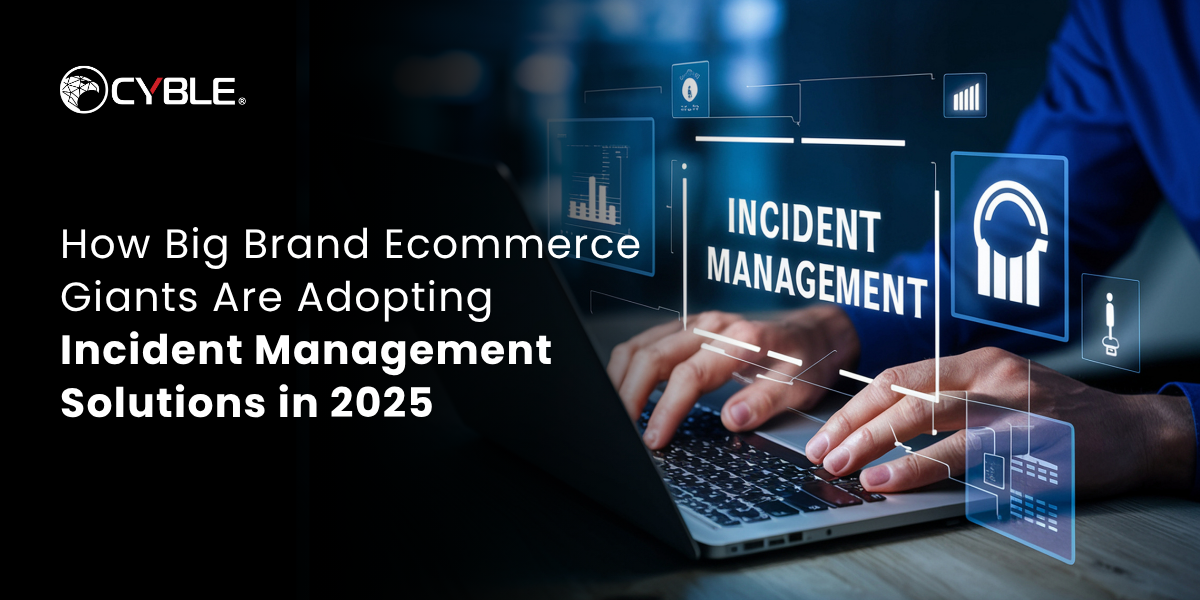The ecommerce industry is booming, but so are the risks.
In 2024 alone, global losses to online payment fraud reached $44 billion, and experts forecast that number will exceed $100 billion by 2029. Cybercriminals are growing smarter, faster, and bolder, and no brand is too big to be targeted.
Take Ahold Delhaize, one of the world’s largest grocery and ecommerce companies. In late 2024, it faced a cybersecurity breach that disrupted payments across its U.S. operations, forcing critical systems offline. Similarly, Bassett Furniture Industries disclosed a ransomware attack that halted manufacturing and raised major concerns around business continuity. These aren’t isolated incidents, they are warnings.
Today’s attacks don’t just steal data; they stop operations, erode customer trust, and threaten revenue in real time.
That’s why incident management solutions are becoming non-negotiable for big ecommerce brands. In 2025, staying competitive isn’t just about fast delivery and seamless UX, it’s about being ready for the unexpected.
In this article, we will explore how major ecommerce companies are rethinking their cyber resilience strategies. Moreover, understand why incident management for ecommerce has become mission-critical, what tools and strategies are driving smart ecommerce incident response in 2025.
Why Brands Are Making the Shift
So why now? Why are some of the biggest ecommerce companies finally prioritizing this space?
Here are a few key drivers:
- Rising number of attacks: Ecommerce platforms are one of the most targeted industries globally.
- Complexity of digital ecosystems: With microservices, cloud integrations, and third-party APIs, diagnosing incidents has become harder.
- High expectations for uptime: Consumers expect 24/7 service. Even a 10-minute delay can hurt revenue and reputation.
- Increased regulatory scrutiny: With evolving privacy laws, incident handling needs to be documented and compliant.
This explains how ecommerce companies manage cyber incidents more proactively in 2025 than ever before.
What Incident Management Looks Like in Ecommerce
Modern incident management solutions tailored for ecommerce aren’t just IT helpdesk software. They combine several capabilities:
- Real-time monitoring of infrastructure, applications, and customer-facing portals.
- Smart alerting systems that prioritize issues based on severity and business impact.
- Automated playbooks that kick off predefined response workflows.
- Collaboration tools that bring together security, IT, DevOps, and customer service teams.
- Post-incident analysis to learn, adapt, and prevent recurrence.
The goal is simple: keep disruptions short, minimize damage, and ensure a seamless experience for users.
Companies are increasingly turning to platforms like Cyble’s incident management solution for structured, data-driven, and customizable response frameworks. Cyble offers a streamlined interface for detection, triage, communication, and recovery, aligned with the unique needs of fast-paced ecommerce environments.
It’s a smart step forward in building incident response strategy for ecommerce players who are done with reactive firefighting.
Top Ecommerce Security Trends 2025
As ecommerce continues to evolve, so do the tactics and technologies around protecting it. Here are some top ecommerce security trends 2025 brands are aligning with:
- AI-powered detection: Incident tools now use machine learning to detect anomalies faster and with more accuracy.
- Zero-trust architecture: Ecommerce players are locking down every access point and validating every transaction.
- Integrated incident platforms: No more siloed teams; incident management spans across IT, security, and customer service.
- Cloud-native response tools: With most ecommerce platforms running on cloud infrastructure, response tools are built to be cloud-first.
This is why big brand ecommerce cybersecurity solutions now include integrated incident response by default.
Choosing the Right Incident Management Tools for Online Retailers
Not every incident management tool is built for the fast pace of ecommerce. For online retailers, the right solution must offer speed and automation to reduce response time, especially during high-traffic events like sales or holiday surges.
Scalability is key, but so is visibility, brands need a clear view across every service, app, and third-party integration to understand what’s happening in real time.
Just as important is the ability to customize the system to fit internal workflows, so teams aren’t forced to adapt to rigid, one-size-fits-all platforms.
The best tools do more than just flag issues, they streamline the response process, minimize confusion, and help teams fix problems fast, before they impact customers or revenue.
Challenges in Ecommerce Incident Response
Even with the best tools in place, incident response in ecommerce doesn’t always run smoothly. One of the biggest challenges is alert fatigue, teams often face a flood of notifications without clear prioritization, making it hard to know what actually needs attention. Then there’s the issue of alignment: IT, DevOps, and business teams sometimes work in silos, slowing down response efforts.
And when incidents do occur, poor documentation can leave teams scrambling to piece together what went wrong.
These hurdles show that effective incident response solutions in 2025 aren’t just about having the right technology, they also depend on strong processes, clear communication, and collaboration across every corner of the organization.
What Makes a Winning Incident Response Strategy for Ecommerce?
In today’s ecommerce landscape, the goal of incident response isn’t to eliminate every issue, it’s to minimize disruption and recover fast. A winning strategy in 2025 starts with clearly defined roles so everyone knows what to do when something goes wrong. Automation also plays a key role by handling routine tasks quickly, allowing teams to focus on what matters most.
Equally important is timely communication, both internally and with affected customers, so that trust isn’t lost in the chaos. And after every incident, strong teams rely on feedback loops to analyze what happened, what worked, and where they can improve.
The most effective incident management for ecommerce works quietly in the background, barely noticeable to end users, yet essential for keeping the business running smoothly when every second counts.
Conclusion
Let’s be honest, fast shipping and polished product pages won’t mean much if your platform crashes on Black Friday or customer data leaks in a midnight breach. In 2025, resilience isn’t a nice-to-have; it’s the battleground where ecommerce brands will win or lose.
That’s why incident management solutions are no longer just a backend upgrade, they are a boardroom priority. The ecommerce giants who get it are investing not just in prevention, but in precision response. They are building smart, coordinated systems that don’t just sound alarms but solve problems before customers even notice.
Because in a world where threats are constant and customer patience is razor-thin, the ability to recover fast isn’t just smart, it’s survival. The brands that treat incident response as a strategic asset, not a fire drill, are the ones that will own tomorrow’s market. The rest? They will be learning the hard way, one breach at a time.

















